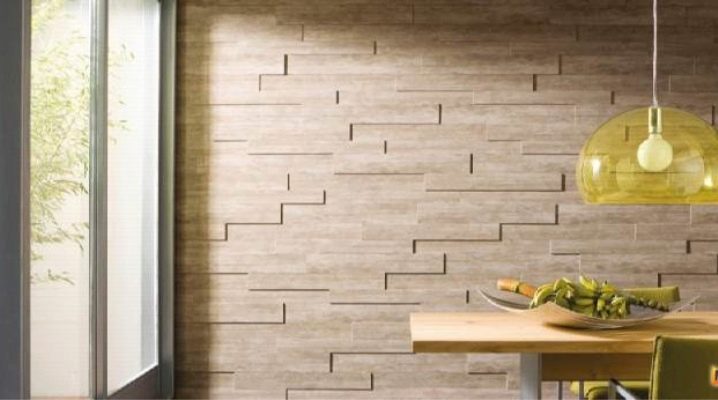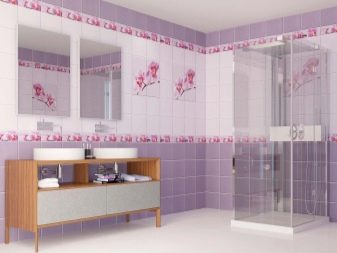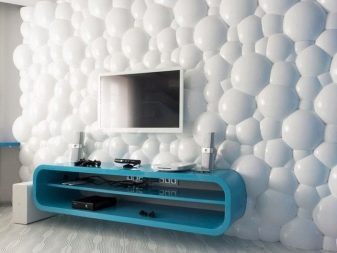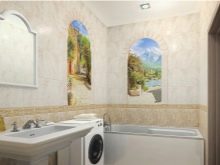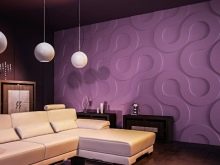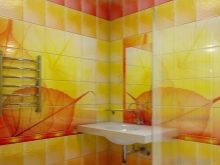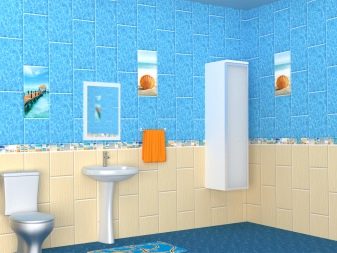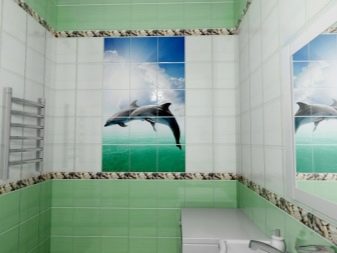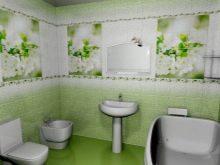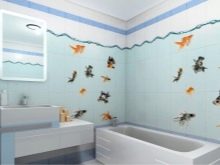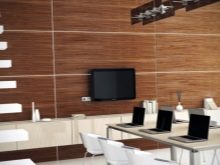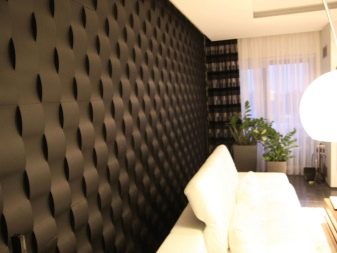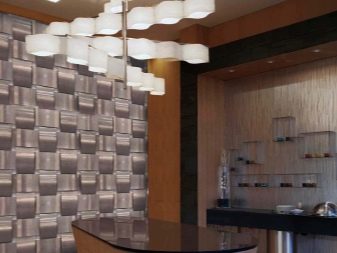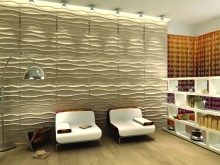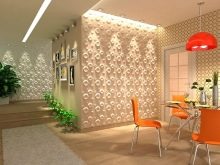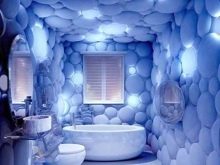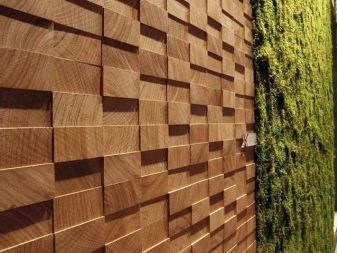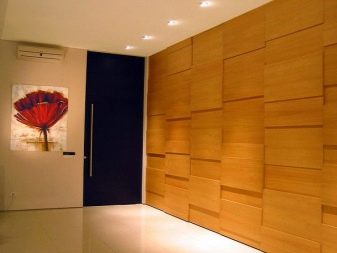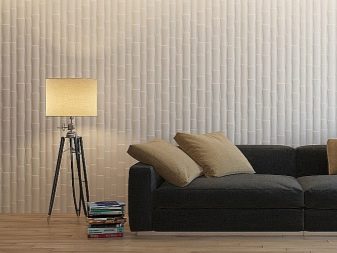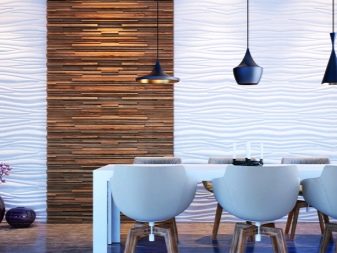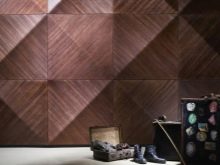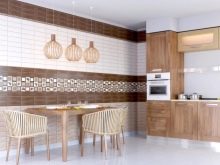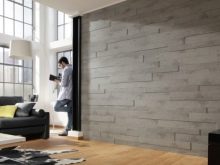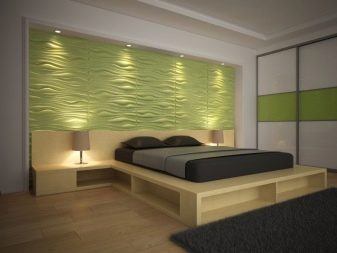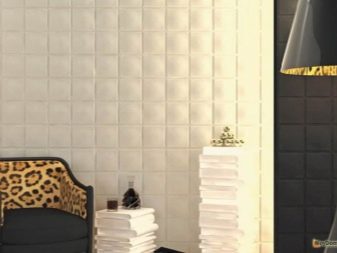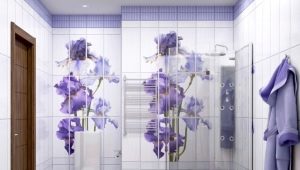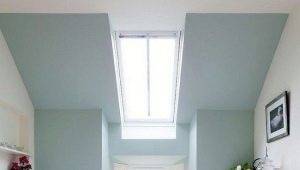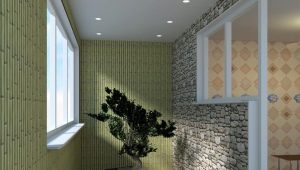Features 3D PVC panels
At various times when decorating the walls in apartments or country houses used a variety of materials. Wallpaper and wall paneling, MDF panels and natural wood - all this was used in the design of rooms. Currently, these materials have been replaced by modern materials that are distinguished by their functionality, ease of installation, and attractive design. One of these materials are 3D panels.
What it is?
3D panels are plates of various sizes and thicknesses, in which the inner side is smooth and the outer surface is a three-dimensional pattern. When finishing with such wall panels, a feeling of volumetric image is created. The pattern used to create patterns can be completely diverse and depends only on the creator’s imagination.
Accordingly, various patterns can significantly affect the perception of space, reducing, pulling or expanding it. This property of 3D panels is actively used by designers to create interesting interiors.
Advantages and disadvantages
The use of decorative 3D-panels due to several advantages.
- Ease and simplicity at installation. For mounting this finishing material does not require special training.
- Lightweight preparatory work. Before installation, it is not necessary to level the walls, to fill up the gaps or joints - an excellent masking of the foundation's faults. Panels cover any surface irregularities and align angles.
- Original design. The room, in the decoration of which this material is present, gets a touch of luxury and chic and can not leave anyone indifferent. The room immediately takes on an outstanding appearance.
- Correction of deficiencies in the geometry of the room. Depending on the pattern used, the visual boundaries of the room can vary greatly: the ceiling may appear higher and the space larger.
- Good thermal insulation. 3D panels retain heat perfectly, which has a great effect on room thermoregulation, especially in the cold season. And with the use of additional insulation, laid behind the panels, you can perfectly reduce heat loss by 50-70%.
- Excellent combination with other materials.. These wall materials are perfectly combined with wallpaper, and with tiles, and with wood, so they are used in a variety of interiors.
Despite such a vast number of advantages, 3D panels have some drawbacks.
- High price. This finishing material is considered one of the most expensive in the construction market, therefore not everyone who wishes can afford such pleasure. The price is due to the complexity of the process.
- Some materials used in the manufacture of embossed wall panels are characterized by the complexity of care. For example, gypsum or natural wood are afraid of moisture. In addition, such materials are not recommended to be cleaned with aggressive chemicals.
- Wrong selection of the pattern can be very tiring on the eyes and worsen overall health.. Therefore, the choice of drawing must be approached very responsibly and carefully.
Species
Such a huge variety of 3D-panels due to the use of a variety of materials in manufacturing.
Aluminum
This material is used only when creating the frame of each tile. The relief or pattern is applied using perforation or bending of the surface.Then the entire surface is covered with a decorative film. Thanks to PVC film, metal panels can be given any kind, color or shade.
Such panels have light weight and durability. With proper care, the coating can be used for several decades. Aluminum does not corrode, so often such finishing materials are used in rooms with high humidity, for example, in the bathroom.
Also, they are not afraid of fire and are considered among the most fireproof.
The downside can only be the fact that a frame or crate is necessary for fixing such panels, since due to the construction features it is impossible to fix them directly to the wall.
Plastic
Plastic or PVC panels can be safely called one of the most popular among the population. Safety, ease of care, a huge range of textures and drawings, low price - all this allowed this type of 3D panels to break into the market leaders in building materials.
Among the polymer models there are several varieties of 3D-panels: perforated, mirrored, textured and glossy.Such a variety allows you to choose the finish for any type of room. Good moisture resistance makes it possible to use this material in bathrooms and shower rooms.
Polymeric panels can be covered on top with a film that can imitate leather, suede, stone or wood. All these properties are actively used by designers.
Natural wood
The natural wood 3D panels look luxurious, giving the room a noble look. They are very eco-friendly, perfectly breathable. The material exudes a pleasant aroma. This finish will suit the luxurious interior in the Empire or Baroque style. Some modern styles also actively use natural wood.
However, the high price and complexity of care may be the reason for not using this material. To maintain a respectable appearance and preserve the properties of natural wood, it is often necessary to treat the surface with special means protecting the tree.
The tree reacts strongly to changes in humidity and temperature, so it is necessary to monitor the microclimate of the room. In addition, wooden panels are quite heavy, which greatly complicates the installation of the structure.
Bamboo
This is another version of 3D panels made of natural material, which is popular because of its low price and easy installation. Bamboo is quite a flexible material that allows you to create fantasy patterns. Sometimes the bamboo is ground and mixed with adhesive resins, and then pressed. Very durable, but lightweight tiles that can be applied to any pattern are obtained.
MDF
One of the safest and environmentally friendly materials. The properties of the panels allow you to give them any shape and texture. The range of use of such 3D wall panels is very high: nursery, living room, corridor, kitchen. They are easy to install: simply apply glue to the inside and press it against the wall. The only restriction in use is a wet environment: the raw edges of the tile can absorb moisture, which will lead to deformation.
Prices for such decorative panels are quite high.
Plaster
Popular material due to ease of processing. You can apply absolutely any pattern on gypsum boards and give them the most unusual shape. The low price, fire resistance, good vapor permeability make these panels attractive to consumers.
However, the material is able to absorb moisture, so it is not recommended for wet rooms. In addition, it is quite fragile, so when installing it is better to use glue.
Thus, panels with a 3D effect can significantly expand the horizons of the design world and add originality to both the luxurious and more modest interior.
For information on how to make 3D panels of plaster with your own hands, see the following video.
